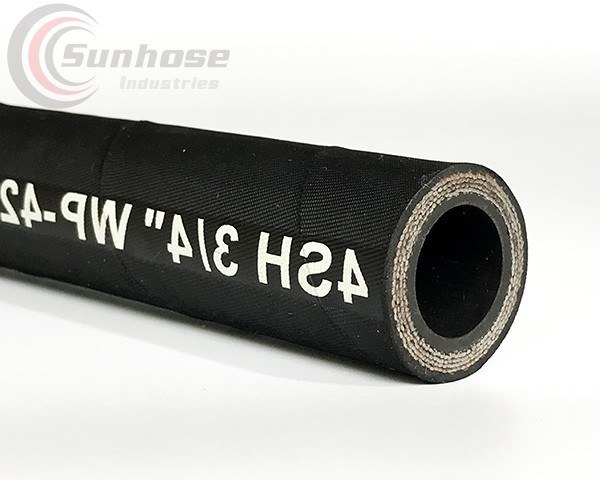What is a hydraulic hose?
Hydraulic systems are the lifeblood of countless industries, powering machinery and equipment that move, lift, and perform critical functions. At the core of these systems lies a humble yet indispensable component—the hydraulic hose. In this article, we delve into the world of hydraulic hoses, unraveling their purpose, construction, types, and maintenance. Whether you’re an industry professional or simply curious about hydraulic systems, this guide will equip you with the knowledge you need to understand and appreciate the power behind hydraulic hoses.
1, What are Hydraulic Hoses?
Hydraulic hoses are flexible, reinforced tubes that carry fluid under pressure within hydraulic systems. They act as vital conduits, transmitting power from hydraulic pumps to cylinders, motors, and other components. These hoses are designed to withstand high pressures and extreme temperatures while maintaining flexibility, making them ideal for demanding industrial applications.

4SH Hydraulic Hose 3/4″
2, Construction and Components:
Hydraulic hoses are typically composed of three layers:
a) Inner Tube: This layer is in direct contact with the fluid being conveyed. It is made of synthetic rubber or thermoplastic material, selected based on the type of fluid, temperature, and pressure requirements.
b) Reinforcement Layer: This layer strengthens the hose and prevents it from expanding under pressure. Common reinforcement materials include braided or spiraled steel wire, providing flexibility and reinforcement simultaneously.
c) Outer Cover: The outer layer shields the hose from external damage, such as abrasion, chemicals, and environmental factors. It is often made of synthetic rubber or thermoplastic, designed to withstand harsh conditions.

Hydraulic hoses
3, Types of Hydraulic Hoses:
a) Rubber Hoses: These hoses are versatile and commonly used due to their durability and flexibility. They are suitable for a wide range of applications, including construction, agriculture, and industrial machinery.
b) Thermoplastic Hoses: Known for their lightweight and high resistance to chemicals, thermoplastic hoses are often used in applications requiring flexibility and resistance to abrasion. They find applications in areas such as aerial lift equipment and hydraulic tools.

Thermoplastic Hoses
c) Teflon Hoses: These hoses are specifically designed for applications involving high temperatures or chemicals that may react with rubber. Teflon hoses are resistant to heat, corrosive substances, and electrically conductive fluids, making them suitable for aerospace, automotive, and chemical industries.

Teflon Hoses
4, Proper Maintenance and Care:
To ensure optimal performance and longevity of hydraulic hoses, regular maintenance is crucial. Here are some key maintenance practices:
a) Inspect hoses for wear, cracks, bulges, or leaks regularly.
b) Store hoses properly to protect them from sunlight, chemicals, and extreme temperatures.
c) Replace hoses that show signs of damage or have exceeded their recommended service life.
d) Follow the manufacturer’s guidelines regarding fluid compatibility, pressure ratings, and temperature limits.
5, Importance of Choosing Quality Hoses:
Selecting high-quality hydraulic hoses is essential for the safety and efficiency of hydraulic systems. Inferior hoses can lead to leaks, pressure loss, and even catastrophic failures. By investing in reliable hoses from reputable manufacturers, businesses can minimize downtime, reduce maintenance costs, and improve overall productivity.
Conclusion:
Hydraulic hoses are the unsung heroes of hydraulic systems, enabling the seamless transmission of power and ensuring the smooth operation of machinery across diverse industries. Understanding their construction, types, and maintenance practices is crucial for businesses and professionals working with hydraulic systems. By prioritizing the selection of quality hoses and following proper maintenance procedures, companies can harness the full potential of hydraulic technology, enjoying enhanced reliability and performance in their operations.

 sunhose
sunhose sunhose
sunhose